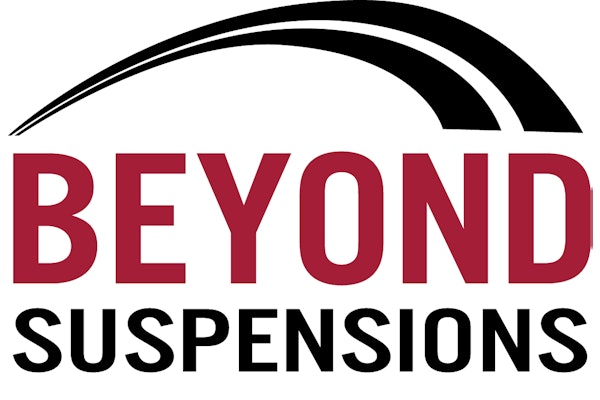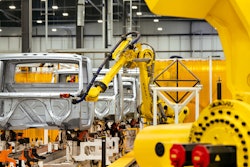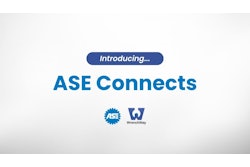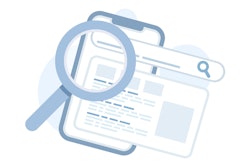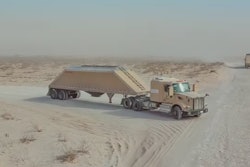Show trucks – those big rigs decked out in chrome, custom paint and luxury amenities – have taken center stage. This passionate hobby and competition among custom-truck enthusiasts is gaining greater visibility, thanks in part to the Chrome Shop Mafia’s “Trick My Truck” television program.
And while the program makes truck customization appear to happen in the blink of an eye, it is a bit more complicated than that.
While it is not possible to put a dollar value on the size of this market, according to Kenny McDiarmid, senior sales representative for DuPont, “Ten years ago you hardly ever saw a custom paint job on a heavy-duty truck, but in the last five years it has become more and more popular.”
Many vehicle owners who spend the time and money getting their vehicles customized typically do so to compete in a variety of truck beauty contests held at various trade shows throughout the year.
Customization of these vehicles can run the gamut from special paint treatments, custom fabrication, decorative lights and lots of chrome.
Paint treatments can range from the simple addition of flames to something more elaborate. For example, Robert and Shelley Brinker’s “Legend of the Black Pearl,” a 2000 Freightliner Classic XL, sports graphics and décor that pay homage to Disney’s “Pirates of the Caribbean” films. The vehicle’s theme is a tribute to the Brinker’s daughter who died in 2005 and who is depicted on the truck in pirate costume alongside Johnny Depp’s Capt. Jack Sparrow character. In the past year, they have added pirate song lyrics to the wheel fenders, as well as more characters from the film. The engine also has been painted to look like a treasure chest.
The truck interior mimics the deck of a pirate ship. The Brinkers have installed television screens throughout the rig that show the Pirates film trilogy.
While that may be customization to the extreme, the Brinkers are not the only truck owners who transform their vehicles with such detail and enthusiasm. At truck beauty contests around the country, there are many other trucks just as elaborate.
TRANSFORMING TRUCKS
Most truck customization starts with changes to the factory paint job. If you already are involved in refinishing trucks in your body shop, the move to custom paint jobs won’t require a huge investment in equipment.
The paints offered by paint manufacturers for use on heavy-duty vehicles can be used for some of the customization work, but they also offer custom paints for automotive applications that can be used as well. All of these paints can be used with traditional paint application equipment as well as airbrushes.
“There isn’t any special gun designed for custom applications,” says Jamie Redd, technical sales instruction supervisor, PPG. “The normal spray equipment is exactly what should be used. There is no special treatment other than the extra time and some templates or extra masking that may be needed to achieve the desired result.”
The two factors that separate custom work from regular refinishing are the time involved and the skill level of the painter.
“The most important part of being successful at custom painting is having someone confident enough to be able to do the graphic work,” Redd says. “You need someone who is able to see what the customer wants and then duplicate it on the truck.”
McDiarmid adds, “It takes a different kind of painter to do custom work. Your custom painters usually are more artistic; they are not the typical collision painter.”
This is not to say that a typical truck painter can’t learn the techniques needed to do some simple graphics like flames. Most paint manufacturers offer courses in techniques that can be used to customize a truck.
Redd says that PPG offers a broad range of custom application classes based around graphics and airbrush techniques. “These are good foundation classes, but a custom painter needs to develop his own style and go beyond what he can learn in a class.”
McDiarmid explains that a skilled painter is necessary not just for his artistic skill but also for his product knowledge. “He needs to know which products are compatible, recoat times, how to pull off masking tape to get clean lines, what kind of clear coat to use, etc.”
For many show trucks, painting is only the beginning of the customization process. Vince Cullen, fleet account manager, DuPont, explains, “You also need some very talented body men and fabricators because some vehicle owners want a lot of modifications to the cabs, sleepers, chassis and the body itself. If you are going to get into customization, you will be heavy into vehicle fabrication.”
The other factor to consider when looking at whether to get into truck customization is the time involved. According to Redd, the focus of most collision repair shops is to get the vehicle fixed, repainted and back on the road as soon as possible. “If you are going to get involved in customization, you have to make sure that everybody inside the body shop is on board with the process. Custom painting a rig is time consuming, and the prep and paint work can take four to six weeks to complete.”
He adds, “You have to be aware that a custom job is going to tie up a portion of your building for that amount of time.”
John Lewis, product fleet manager, PPG, also cautions that owners of custom trucks are very particular about the quality of the work performed on their vehicles. “When a guy is spending hundreds of thousands of dollars to chrome, fabricate and paint it, he will perform a microscopic inspection on the finished product. If it is a show truck, he will go over everything with a fine-tooth comb.”
RETURN ON INVESTMENT
Given that custom paint jobs are time consuming and likely will require you to hire a highly skilled painter, how lucrative is this niche?
Lewis says shops doing custom paint can charge a premium over a normal “fix it up and repaint it” job.
“There is a lot of work involved, a lot of labor and some very high priced paint, so they can charge a significant premium, especially if it is a one-of-a-kind truck.”
Shawn Rabone, DuPont technical representative and a former truck painter, says, “Don’t be afraid to charge for what you are doing. It is very intricate work and very time consuming.”
He says the safest way to determine what to charge when you first get involved in custom painting is to use an hourly rate.
Redd says that when you are first starting out, you may need to charge less until you have made a name for yourself. “A guy who is just starting out, may charge less in order to get his work out in the field, but once he starts to get recognition he will be able to charge whatever the market will bear.”
While no one thing will guarantee you will be successful at custom painting, McDiarmid advises you to “follow one manufacturer’s system whenever possible. By that, I mean use paint from one manufacturer throughout the entire process.” This is true, he says, even if you have to go outside the paints specifically designed for heavy trucks and into some of the more exotic types of paints that are used to customize automobiles.
Rabone adds, “The reason to go with one manufacturer’s products is that not all paints are compatible. Certain base coats are not compatible with each other and certain clear coats are not compatible with certain base coats. You really have to do research to make sure the paints you have selected are compatible.”
McDiarmid also suggests using test panels to achieve the look and finish you want before applying any paint to the vehicle. “You don’t want to jump into the middle of a big Peterbilt and then end up saying ‘this is not what I really wanted’ and having to redo it.”
Advice From The Boyz
John Latta, editorial director, Driver Division for Randall-Reilly Publishing (publisher of Truck Parts & Service), recently talked with members of the Chrome Shop Mafia. Here are some tips from the masters on how to ensure your customer gets the custom look he wants.
Being a custom painter involves more than being skilled at paint application. According to Rob Richardson, “You have to try to understand the person you are building it for, to remember something they said about themselves or something that excited them. The clues aren’t always in what they ask for but how they ask for it. You can help them make an idea reality, and you can work it out so that it not only works but it doesn’t cost the earth and yet it’s still what they want.”
Rod Pickett adds, “We interpret what they want. A lot of times what they tell us, well, if we did that it would not be what they really had in mind. We have to spend time with them until we’re both speaking the same language.”
Bryan Martin also says it is possible to do the customization in stages. “Do the back end and then wait awhile and do the stacks. Then after a few months do the front end and later on do the interior.”
Customization is not cheap, and using the entire budget at once may mean the trucker probably can’t do all he wants and it also means he could be off the road for a long time.
He advises to make sure you and the customer have thought through the project so that everything will work together. “You don’t want it to look like a work in progress forever. You want each stage to have a sense of completion about it.”
A Customization Tale
In order to keep the work flow in his dealership’s body shop steady, Rick Boardwine, president and CEO of Peterbilt of Bristol, turned to Class 8 customizing last year.
Road Warrior is the second frame rail-to-roof build that the Bristol, Va., dealership and body shop tackled. The 2005 Peterbilt 379 was an entry in the Big-Rig Build-Off at this year’s Mid-America Trucking Show.
Though the arresting front end is the first thing that catches the eye, the back also is a showcase of the shop’s craftsmanship. “It’s a one piece steel back end that we rounded off and welded on,” says Boardwine. The frame rail, the WTI fender brackets and the fifth wheel mounting bolts are blind-mounted, extending the boltless look of the Roadworks visor all the way to the rear.
“We even took the hood latch off the exterior and made it accessible underneath for that clean shaven look,” says Boardwine.
But it is the front-end concept that drove the design. Boardwine saw a comics-style illustration of a truck “with a hood just like this,” he says, “with the grille blacked out except for its edges and vertical bars over its front.”
His shop found a supplier in Mexico that would build the custom grille frame, then others for the stainless steel grille and vertical bars. The dealer bought fiberglass half-moon fenders, then split, widened and lengthened them.
“We then made a mold of that design,” Boardwine says, “Now we can make many of them.”
Boardwine believes what his shop accomplished is “a more workable design. It is relatively easy to do and it’s not out of proportion.” – Todd Dills, Contributing Editor
Opportunity for Distributors
Even if you can’t participate in truck customization, you still can capitalize on its popularity by selling a line of detailing products.
According to Wayne Baker, a trucker whose reefer logs between 120,000 to 150,000 miles a year, it is important for trucks to look good. “The better you look, the cleaner you look, the better off you are. Appearance is 80 percent of the image you present.”
He believes that a clean-looking truck helps him get loads. “The appearance of your truck is a selling point and it has a lot to do with getting loads.”
Accuride recognizes that truck drivers spend a significant amount of money for their trucks and therefore want to take care of them.
According to Accuride, anyone who cares about the appearance of their vehicle will be candidates for detailing products like its Bilt by the Boys line that is co-branded with the Chrome Shop Mafia. “This can be anyone from a casual user who waxes his vehicle once a year to an enthusiast who wants his or her vehicle in show condition.”
Accuride believes that when marketed correctly, the return on investment can be very strong on detailing products.
When you initially decide to add detailing products to your inventory, you need to let your customers know about it. “Many detailing products are bought as an impulse purchase. The products need to be displayed in a highly visible area where there is strong customer exposure,” according to the company. “Ultimately, the best way to market these products is to show the results and explain how the products work.”



